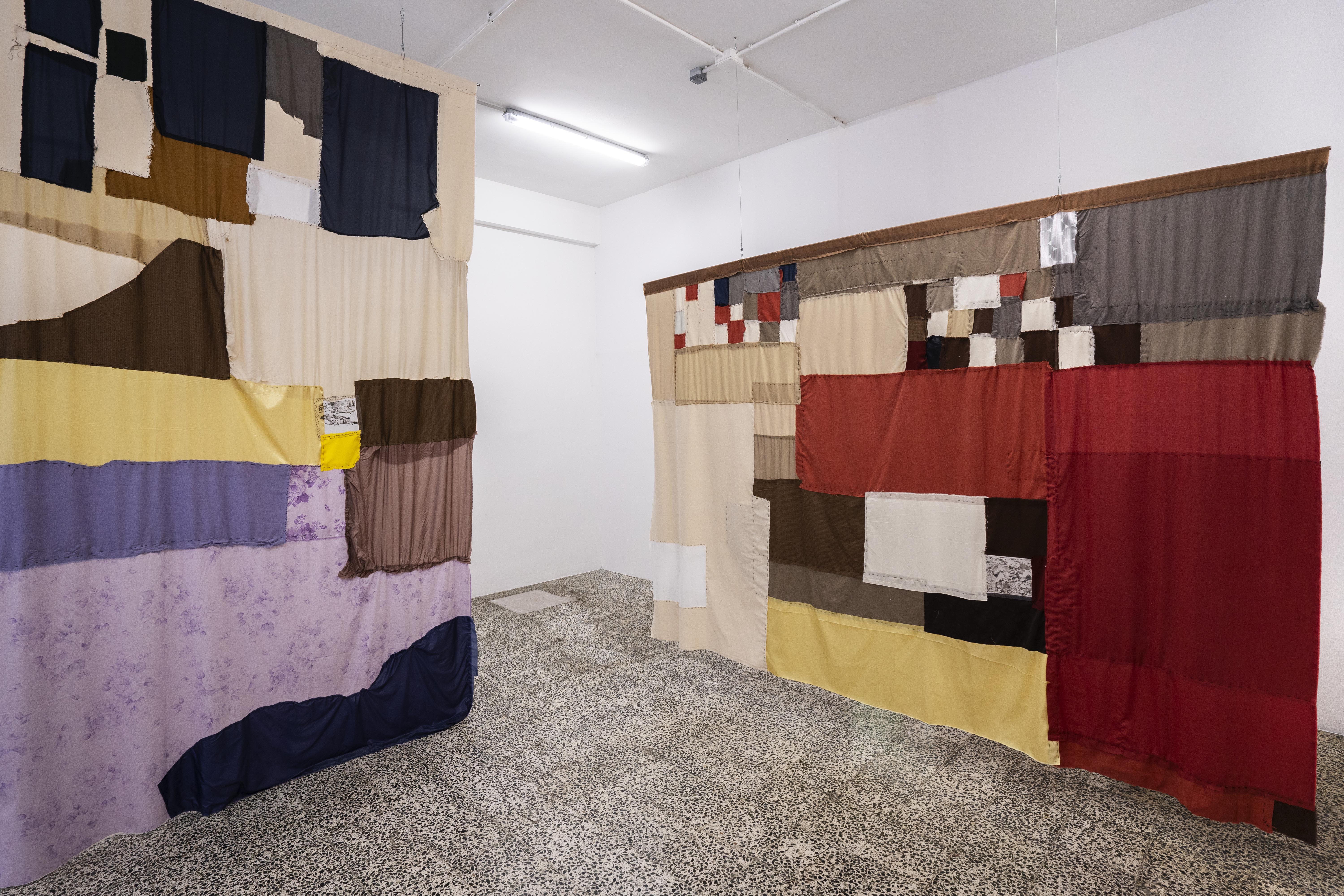
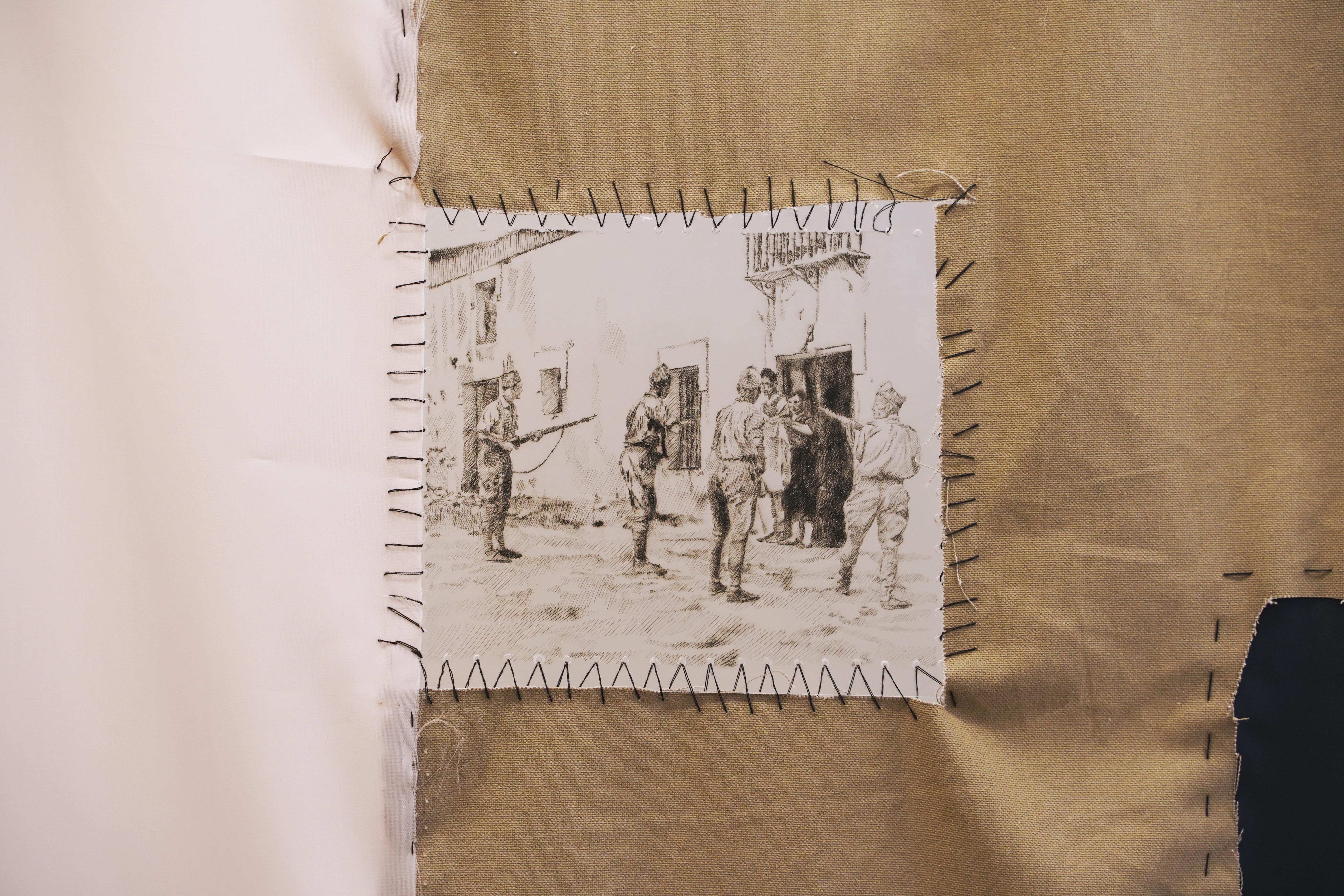
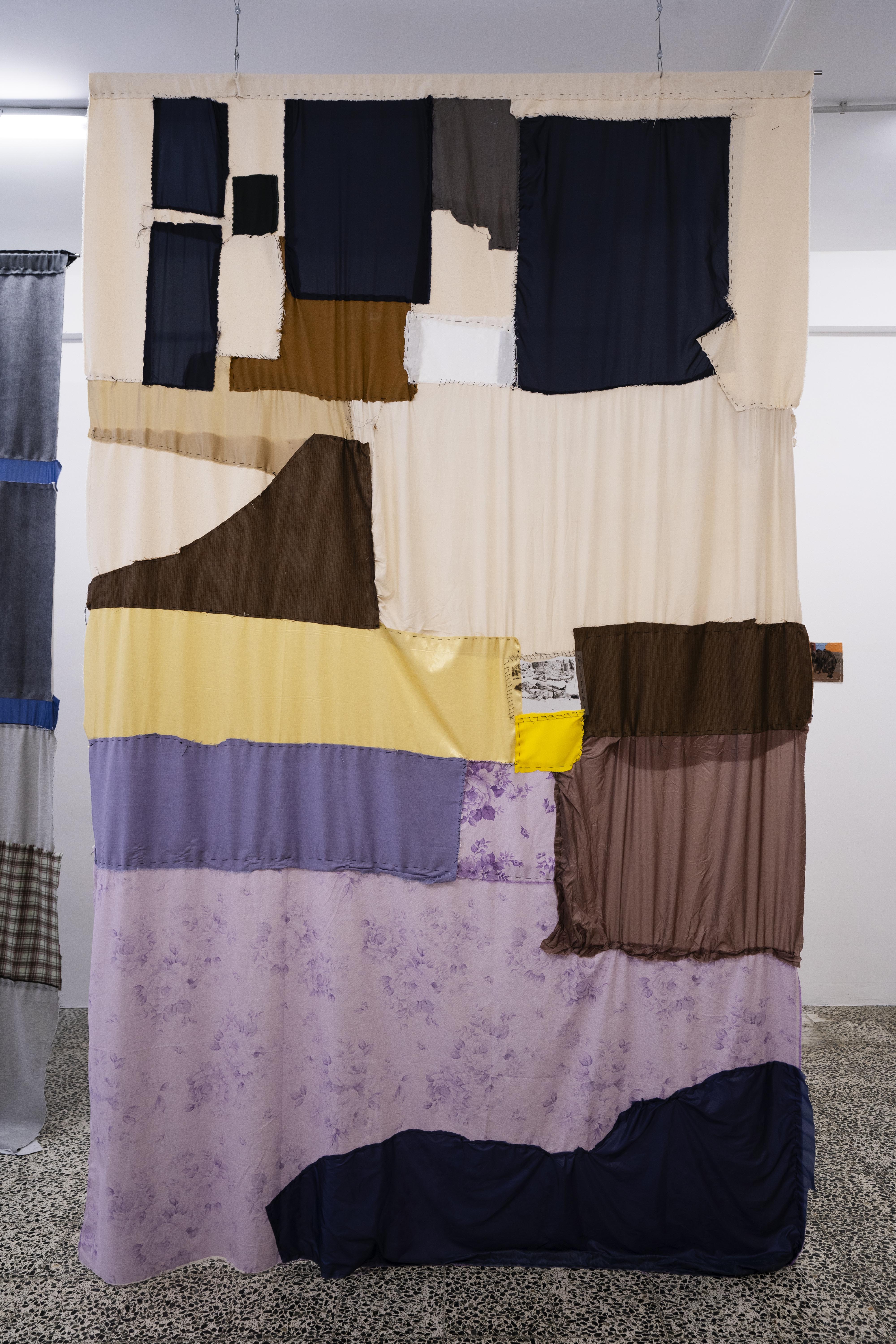
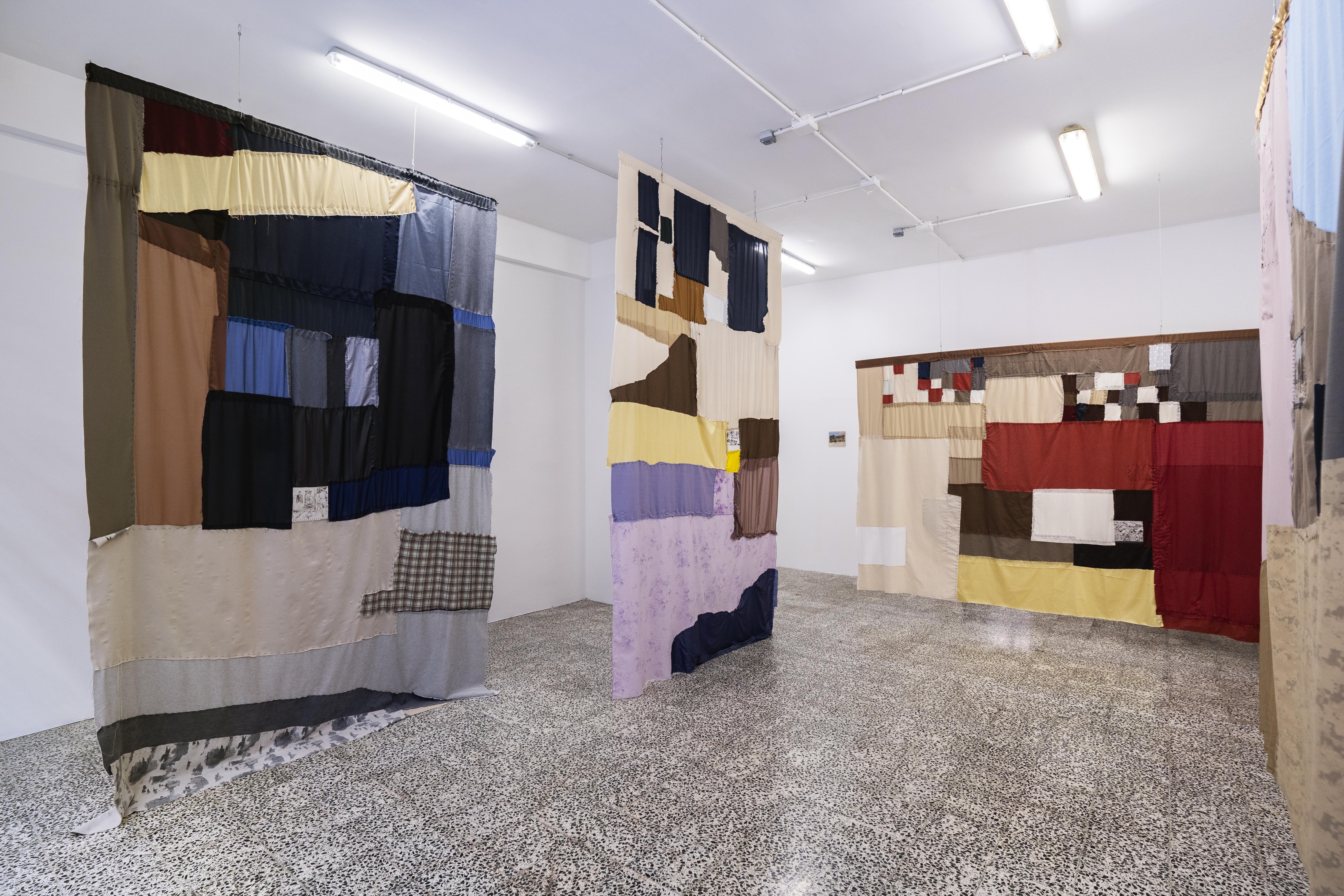
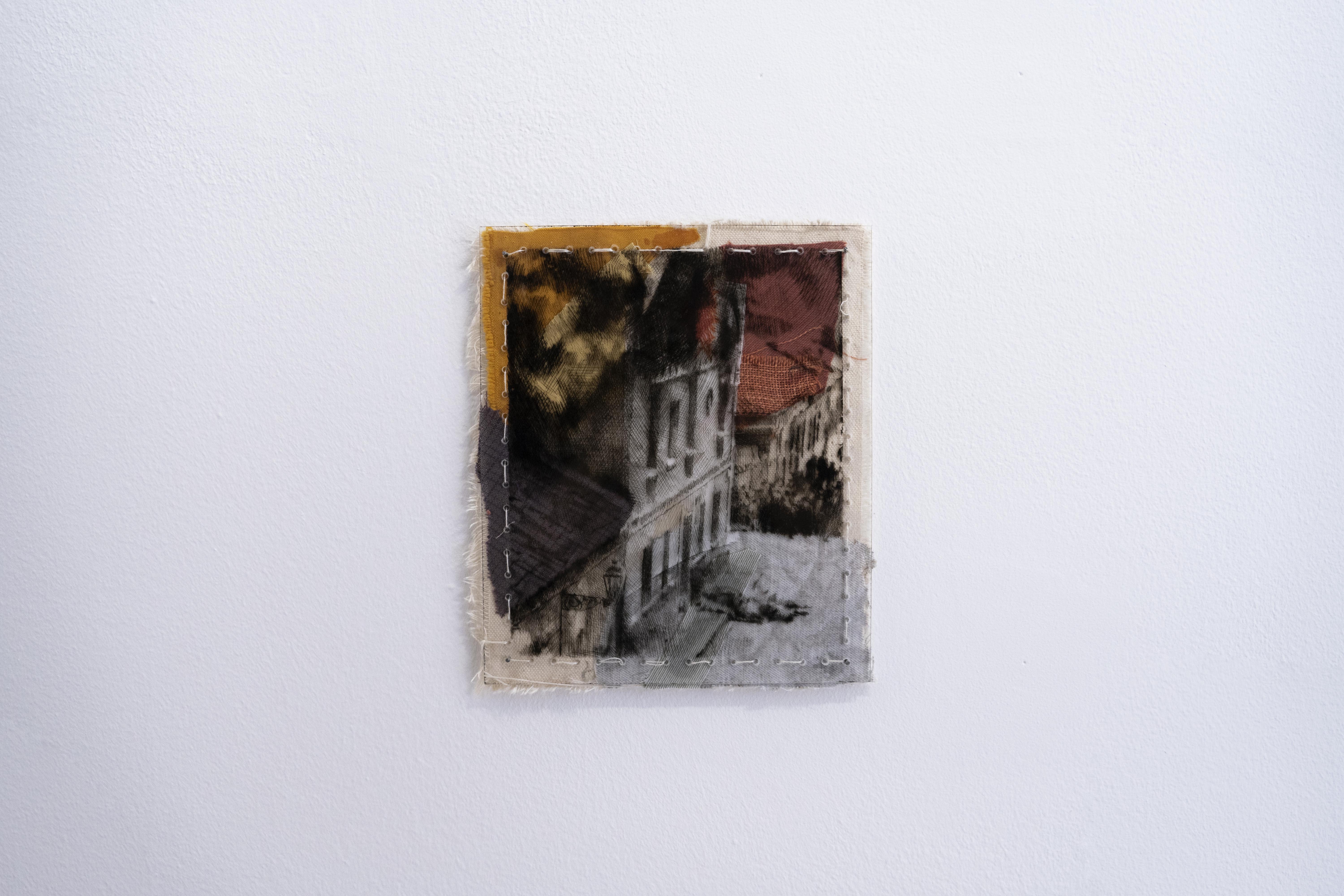

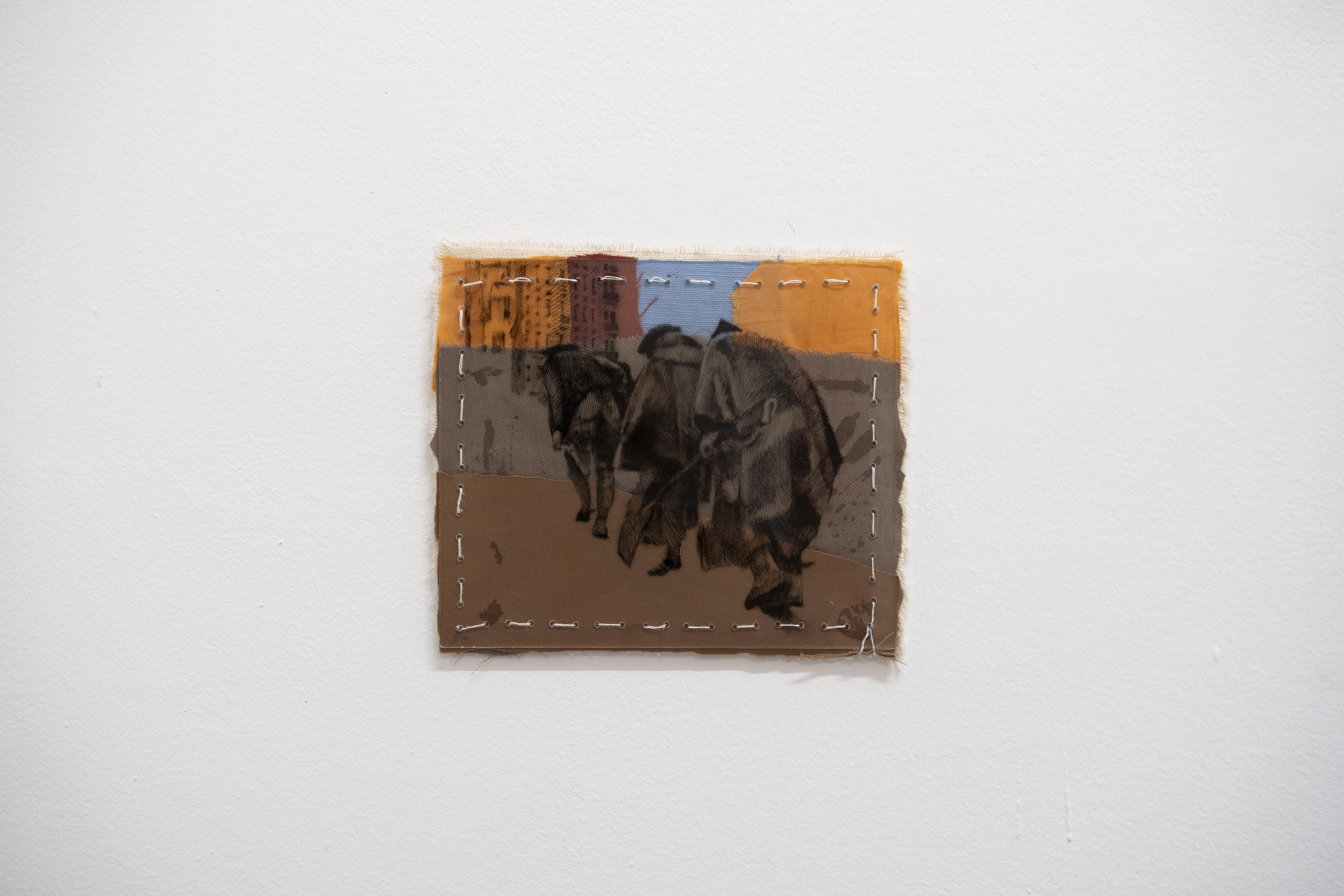

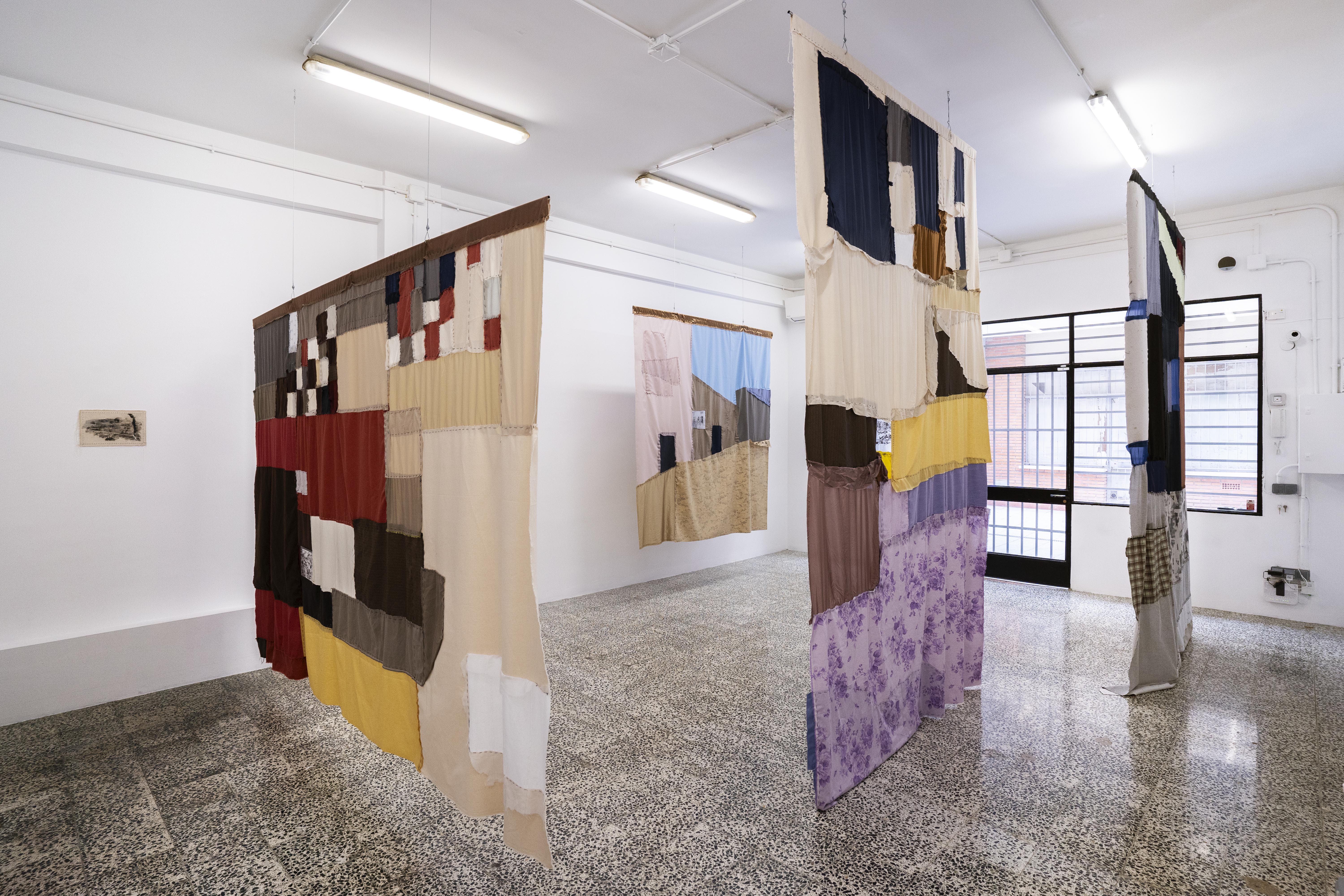

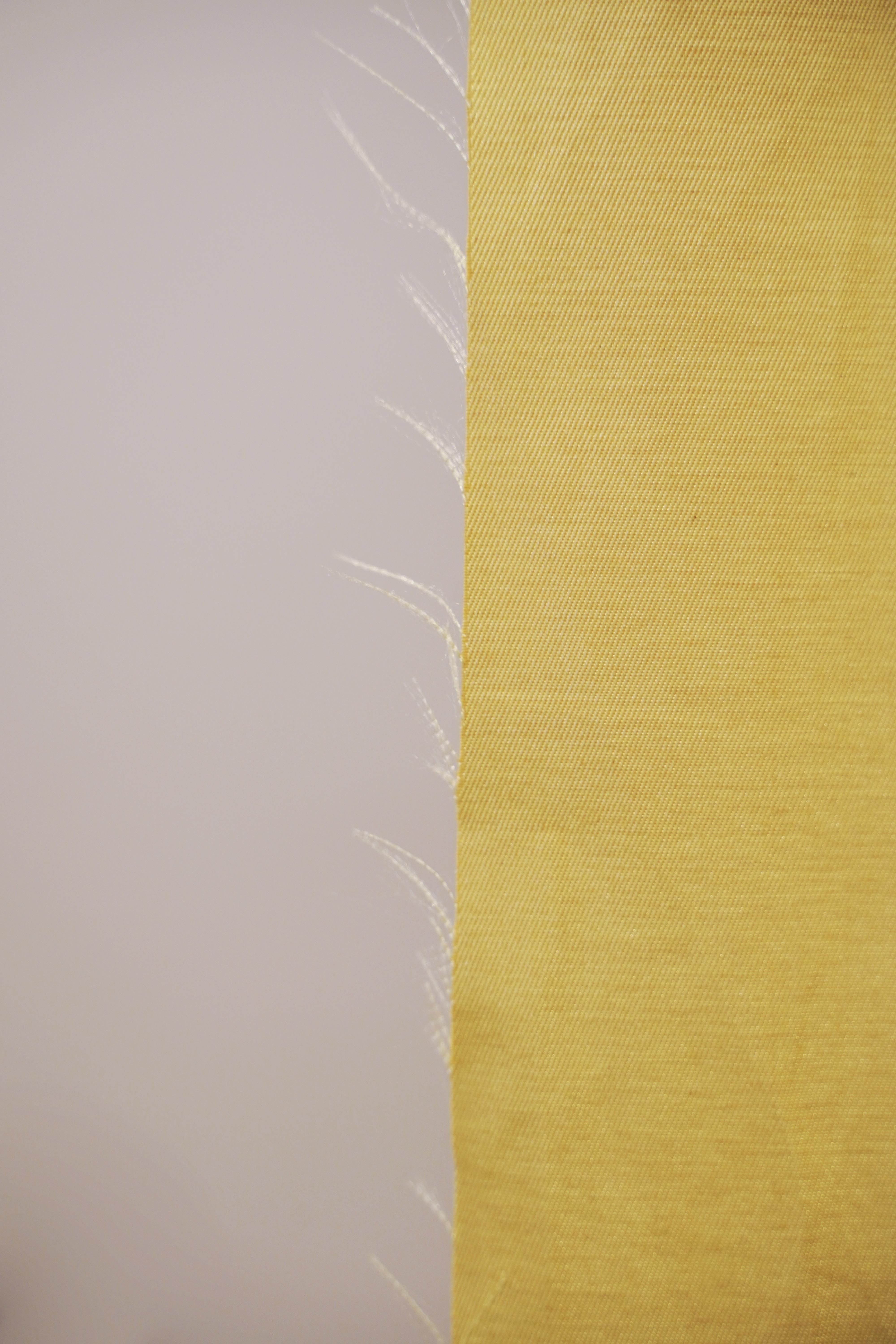

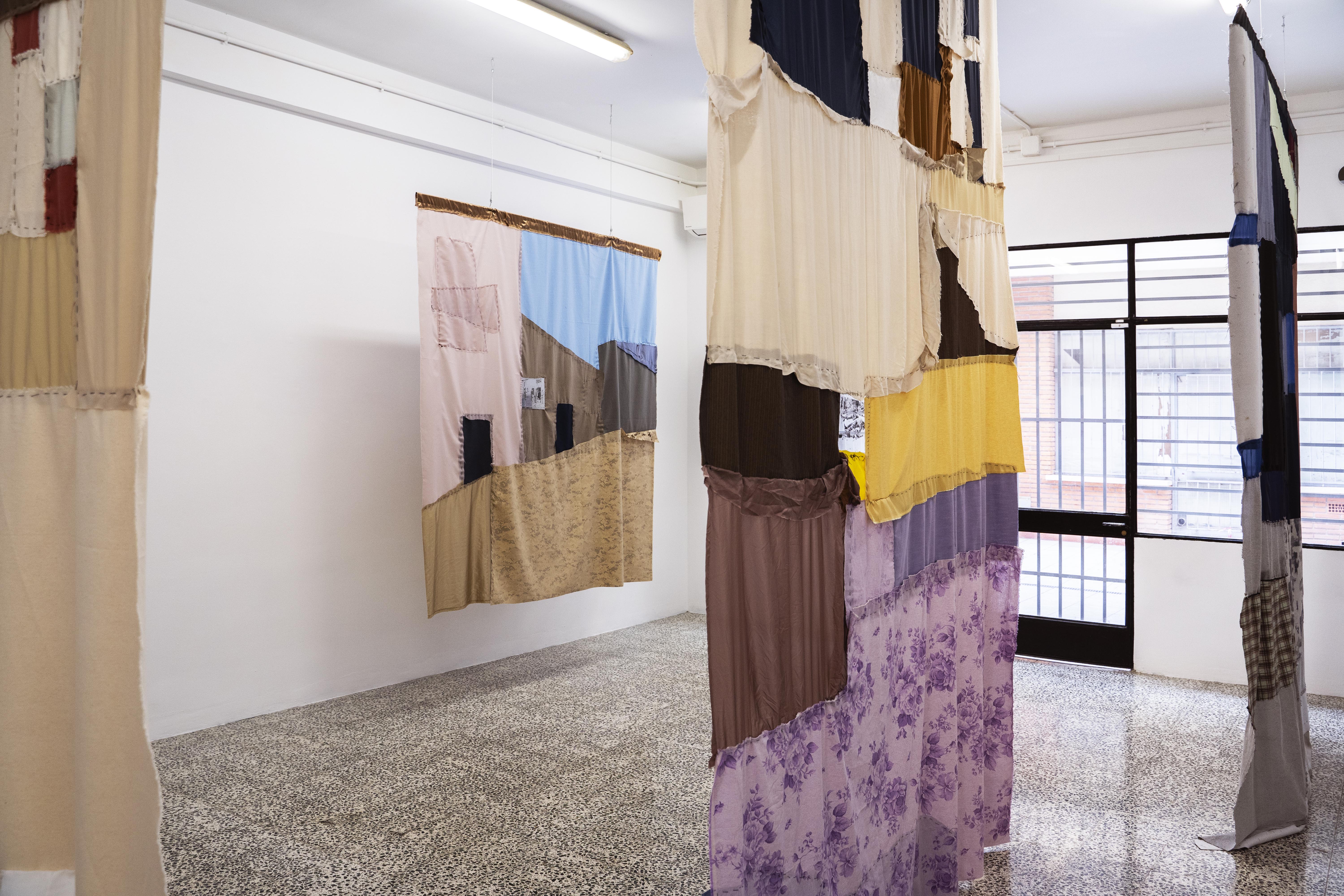

STRANGE COUNTRY IV
19.10 / 24.11.2023
EL CHICO
MADRID
ESPAÑAPHOTOS: GORO STUDIO
"I can see that picture of what we were at an earlier stage may not be recognisable and cannot, certainly, be pleasing to contemplate in later life. But we must not repudiate it, for it is a proof that we have really lived..."
Marcel Proust
The work of Elián Stolarsky confronts us with an abstract past, ominously familiar. Fragment by fragment, drawing closer and pulling away, allusions to strange territories and bodies overlap and fit together.
The artist’s gestures, which trace line by line the photographs of artist Robert Cappa, taken to document the Spanish Civil War, function as bricks that compose an image beyond our reach. The fabrics reveal their seams like scars in which we recognize movements, postures, wounds, faces, and bodies that document an inherited violence and challenge us to construct a fabric of memories where images of the past, present, and future can be exchanged.
The title of the series "Strange Country" references David Lowenthal's book The Past is a Foreign Country, taking the accidentally erroneous translation of the title as a starting point. This series evidences the chronological development of the research that begins with the artist's past as a descendant of a Polish Jewish family, based on family photographs, and unfolds, in this chapter's case, to the national context surrounding her. The artist, far from establishing claims, positions, or calls to action, seeks to analyze the representation and narration of historical events through photographic archives and blur the distance between "them" (the bad, the represented, the distance, the past) and "us" (the good, the spectators, the close, the present).
Walter Benjamin, in A Little History of Photography, states regarding the photos of David Octavius Hill that “there remains something that is not consumed in the testimony of art..., something that cannot be silenced, that is indomitable and demands the name of the one who lived here and is still really here, never wanting to enter art completely.” That indomitable aura, as Benjamin calls it, is also found in the rawness of Cappa's photographs and remains firm when reconfigured by Stolarsky's hand. Stripped of their context, the works, mounted like loose pages of an atlas, show us drawings fitted into the anonymous physiognomy of the landscape represented on the fabrics. The figures that could be sleeping or strolling actually belong to a story beyond our reach and reveal themselves only when we approach and confront them directly, making us lose the complete image of the work. But that aura, its bond to time and place, detaches from the territory informed by cruelty that yields to a landscape and figures imbued with meanings from our subconscious. The images emancipate themselves from their historical origin to create narratives within the present.
Adriana F. Pauly
BACK
